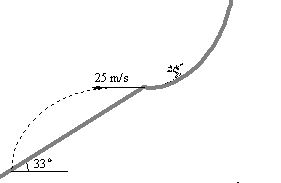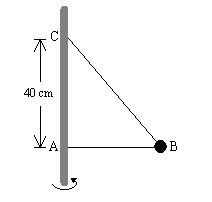Complete the following:
Q1. Perform the following operations and write your answers with the appropriate number of significant figures: (a) 589.01-89.020 (b) 1.0×9.00 (c) 180/π (d) 180.0/π (e) 3.901×10-5+1.0×10-7
Q2. Perform the following unit conversions, and express the answer in scientific notation: (a) 0.510 kg to g (b) 92 mi to km (c) 0.50m3 to cm3 (d) 15μs to ms (e) 60.0 km/h to m/s
Q3. On her way to school, a child discovered that her loonie is missing and there is a hole in her pocket. In searching for the missing coin, the child turned back and walked for 9.5 m, along the sidewalk. Then she turned forward and walked for 3.2 m and then turned back again and walked for 17.8 m before finding her loonie.
1. What is the total displacement of the child?
2. If the child spent 8.5 minutes searching for the coin, what was her average velocity?
3. What was her average speed?
Q4. A car was moving on the highway at a speed of 90 km/h. The driver then stepped on the gas and started to accelerate uniformly at a rate of 0.26 m/s2, and he was able to overtake a truck in 35 s. What was the final speed of the car after this time?
Q5. An electron in a cathode ray tube of a TV set enters a region where it accelerates uniformly from a speed of 3.5 × 104 m/s to a speed of 1.4 × 106 m/s in a distance of 2.0 cm.
1. What is the acceleration of the electron in this region?
2. How long is the electron in the region where it accelerates?
Q6. A hockey player is standing on his skates on a frozen pond when an opposing player skates by with the puck, moving with a constant speed of 12 m/s. After 3.0 s, the first player makes up his mind to chase his opponent and starts accelerating uniformly at 3.8 m/s2.
1. How long does it take him to catch his opponent?
2. How far does he travel before he catches up with his opponent?
Q7. A man standing on the sidewalk throws a set of keys vertically upward to his wife in the window of their apartment 4.0 m above. The wife catches the keys 1.5 s later.
a. With what initial speed were the keys thrown?
b. What is the velocity of the keys just before they were caught?
c. Draw a diagram showing the trajectory of the keys.
Q8. A ball is thrown vertically upward with an initial speed of 11 m/s. One second later, a stone is thrown vertically upward with an initial speed of 25 m/s.
a. Find the time it takes the stone to catch up with the ball.
b. Find the velocities of the stone and the ball when they are at the same height.
Q9. A ship sailed for 2.8 km north, then 3.5 km west, and finally 10.1 km southwest.
a. Sketch a vector diagram representing this motion.
b. What is the net displacement of the ship?
Q10. Three vectors, A, B and C each have a magnitude of 74 units. Their directions relative to the positive direction of the x-axis are 15°, 115° and 215°, respectively. Calculate the magnitude and direction of the vectors
a. A + B + C
b. A + B - C
c. C - 2A
Q11. A stone is thrown from the top of a building upward at an angle of 30° to the horizontal with an initial speed of 24 m/s. The height of the building is 48 m.
a. How long is the stone in flight?
b. What is the magnitude and direction of the stone's velocity just before it hits the ground?
Q12. A ski jumper travels down in a slope and leaves the ski track, moving horizontally with a speed of 25 m/s. The landing incline below her falls off with a slope of 33°.
a. How long is the ski jumper airborne?
b. Where does the ski jumper land on the incline?

Q13. A force F applied to a mass m1 produces an acceleration of 3.0 m/s2. The same force applied to a second object of mass m2 produces an acceleration of 1.0 m/s2.
a. Find the value of the ratio m1 / m2.
b. If m1and m2 are combined, what will be the acceleration of the combined mass (m1+ m2) under the action of the force F?
Q14. Three blocks are in contact with each other on a frictionless horizontal surface as shown. Force
The masses of the blocks are m1 = 1.0 kg, m2 = 2.0 kg, and m3 = 3.0 kg. A horizontal force F = 24 N is applied to m1.
a. Find the acceleration of the three blocks.
b. Find the net force on each block.
c. Find the magnitudes of the contact forces between the blocks.

Q15. A 4.1-kg box is pushed along a horizontal floor by a force of magnitude 21 N at an angle θ = 35° with the horizontal. If the coefficient of kinetic friction between the block and the floor is 0.20, calculate the acceleration of the box. Be careful when calculating the normal force.

Q16. A 4.0-kg toboggan rests on a frictionless icy surface, and a 2.0 kg block rests on top of the toboggan. The coefficient of static friction µs between the block and the surface of the toboggan is 0.60, whereas the kinetic friction coefficient is 0.51. The block is pulled by a 30 N-horizontal force as shown. What are the magnitudes and directions of the resulting accelerations of the block and the toboggan?

Q17. A 100 g bead is free to slide along an 80 cm long piece of string ABC. The ends of the string are attached to a vertical pole at A and C, which are 40 cm apart. When the pole is rotated about its axis, AB becomes horizontal.
a. Find the tension in the string.
b. Find the speed of the bead at B.

Q18. A crate of eggs is located in the middle of the flatbed of a pickup truck. The truck is negotiating a curve in the road that may be considered as an arc of a circle of radius 35 m. If the coefficient of static friction between the flatbed and the crate is 0.66, with what maximum speed can the truck negotiate the curve without the crate sliding out during cornering?